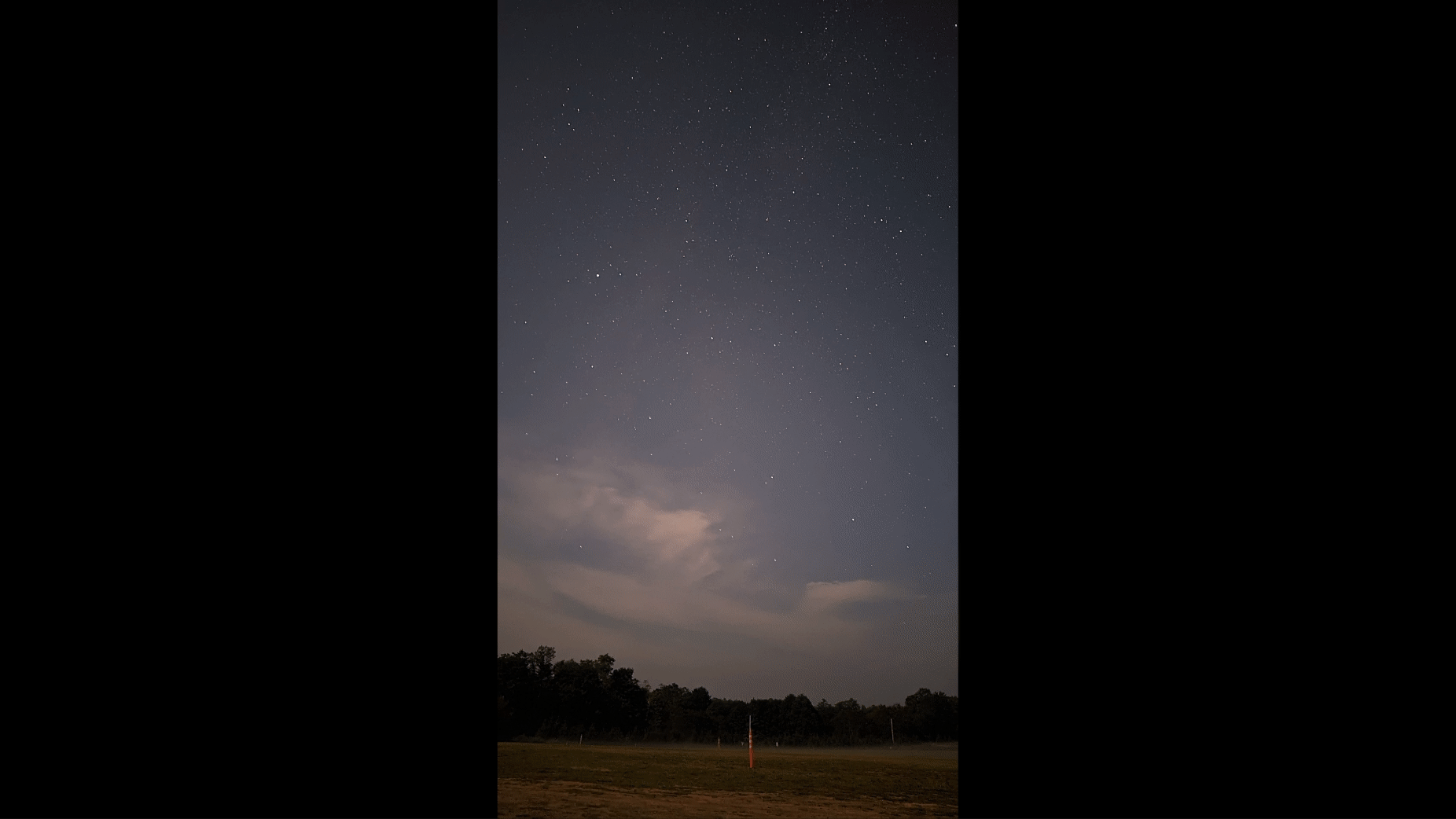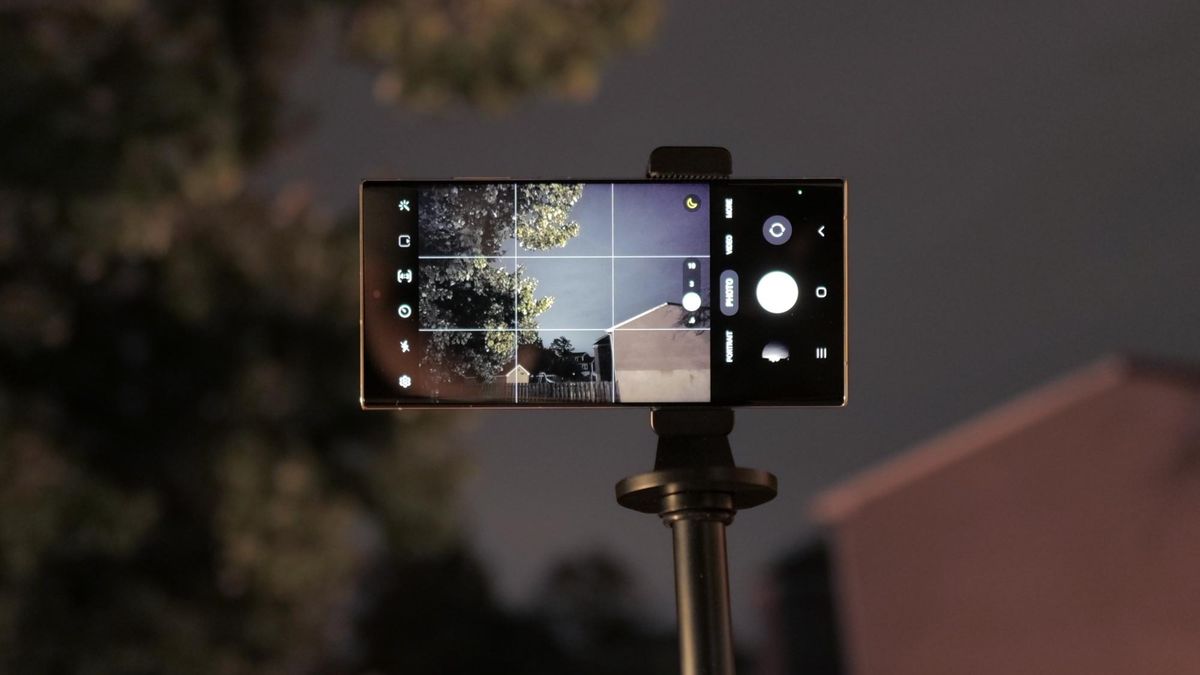All smartphones can take good wanting pictures when it’s sunny and vibrant out, however only a few are geared up to sort out the evening sky. Astrophotography has more and more grow to be greater than only a novel pastime, transferring nearer to the mainstream the place you not want the experience and persistence to see the celebs in pictures.
One purpose why? Most of the finest digital camera telephones round leverage their respective evening modes to attract out the twinkling lights above us from the darkness of house.
We took just a few of at present’s prime flagship smartphones — the iPhone 14 Professional, Samsung Galaxy S23 Extremely, and the Google Pixel Fold — on a highway journey to Cherry Springs State Park in Pennsylvania to actually see how they stack up. The park is good for astrophotography since you get an undisturbed view of the evening sky with out all the sunshine air pollution that cities usually produce.
These telephones don’t come low-cost, exceeding previous the $1,000 vary typically. Nevertheless, if you need the best possible outcomes, you’ll have to pony as much as get them. If that’s not sufficient, we additionally introduced alongside the Sony A7S III, a mirrorless digital camera famend for being a low-light beast.
We’ll reveal extra about every system beneath on this astrophotography face-off, like how straightforward they’re to make use of, their outcomes, and samples to provide the finest image of what’s attainable. To be able to obtain one of the best outcomes, you will wish to hold your digital camera as nonetheless as attainable, which is why we advocate utilizing a tripod to stop any minor shakes from ruining your photographs.
Sony A7S III: One of the best, for apparent causes
All proper, we’ll flat out say that the Sony A7S III was one of the best at dealing with astrophotography — however that shouldn’t be a shock given it’s a mirrorless digital camera with a humongous sensor to attract in additional mild. On prime of that, we paired the $3,500 digital camera with Sony’s 16-35mm f2.8 lens that prices about $2,100.
Not surprisingly, this pairing delivers sharp outcomes and element. Because of its bigger sensor, we didn’t have to spice up the ISO all that a lot in our astrophotography battle. Most often, the ISO was saved between 640 and 800 — with an publicity time of not than 30 seconds.
Many of the vibrant stars within the evening sky have been simply recognizable, however the digital camera sensor’s superior sensitivity permits the Sony A7S III to seize the fainter stars. The quantity of element the A75 captures is astounding — a lot in order that it was additionally in a position to expose a few of the faint, swirling fuel round a few of the star clusters.
Apple iPhone 14 Professional: Good, however not nice
What’s most stunning right here on this astrophotography comparability is that the Apple iPhone 14 Professional fared the worst. It’s exhausting for us to wrap our heads round that as a result of we all know the iPhone 14 Professional is an excellent all-around digital camera telephone that additionally does properly beneath dim lighting situations. To be truthful, you may nonetheless make out a good quantity of stars, but it surely’s nowhere near capturing the identical quantity we discovered with the Sony A7S III.
The general shot by the iPhone 14 Professional simply seems to be softer by comparability, whereas different background fixtures such because the timber lose lots of element and shade. Seeing that the iPhone 14 Professional doesn’t present us with any parameter controls, it is no shock that its astrophotography photographs look the softest out of the bunch — and it is also not surprising that its ISO setting ranged from 1600 to 8000. In most cases, the iPhone’s evening mode gave us an publicity time of 10 seconds on the most.
Don’t get us unsuitable, the iPhone 14 Professional remains to be an honest astrophotography digital camera, however its lack of guide controls means we’re on the mercy of the Apple’s management and picture processing in terms of taking pictures the evening sky.
Google Pixel Fold: The one system right here with time lapse astrophotography
Whereas others will argue that the Google Pixel 7 Professional is the extra perfect candidate for an astrophotography face-off, the explanation why the Pixel Fold is healthier right here pertains to the way it can prop itself. Tehcnically, you don’t want to hold round a tripod and smartphone grip with a purpose to hold this foldable telephone regular.
Curiously sufficient, it was the Pixel 3 that launched us all to the idea of astrophotography on cellular with its Evening Sight mode. That’s been enhanced with every iteration of Google’s telephones, and the Pixel Fold delivers top-notch outcomes. Choosing the longest publicity time with Evening Sight, the Fold produces glorious outcomes crammed with loads of stars and an general picture that’s sharp.

Now, astrophotography isn’t simply remoted to nonetheless photographs with the Pixel Fold, seeing that there’s an choice to additionally seize time-lapse astrophotography as nicely. It’s actually easy to do as nicely, which makes the Pixel Fold much more enticing.
Samsung Galaxy S23 Extremely: One of the best digital camera telephone round
And lastly, there’s the Samsung Galaxy S23 Extremely. There is a good purpose why it lands the highest spot in our greatest digital camera telephone checklist, but it surely’s satisfying to know that it’s very good for astrophotography as nicely. Samsung’s cellular system is the one telephone in our testing that got here near matching the outcomes of the Sony A7S III.
Whereas there’s a devoted evening mode on the Galaxy S23 Extremely, we really acquired higher outcomes switching to the digital camera’s professional mode and manually setting the shutter pace to 30 seconds. The fainter stars within the evening sky that appeared vague with the iPhone 14 Professional have been simply seen with the Galaxy S23 Extremely. On the similar time, the S23 Extremely additionally manages to attract out different particulars just like the fuel round some star clusters.
It’s additionally price mentioning that the S23 Extremely is the one telephone within the bunch with devoted guide controls, which is one thing that helps lovers and execs to dial within the actual settings they wish to seize a scene. Lastly, it provides extra utility than most telephones due to its quadruple digital camera system.
Outlook: You don’t want a dear setup to seize stars

Actually, it’s virtually unbelievable how at present’s flagship smartphones bridge the hole with astrophotography. The entire telephones we used on this astrophotography face-off proves to us that you simply don’t want an costly digital camera and lens to see all of the hidden wonders within the evening sky. The Galaxy S23 Extremely, whereas costly, prices a few fifth of what we spent on the Sony A7S III and its lens.
Better of all, the entire course of is made easy and easy — with the one requirement being that your telephone wants to stay as nonetheless as attainable whereas taking pictures. There’s no fiddling across the settings or going by means of totally different menus with a purpose to pull off superb astrophotography photographs.


